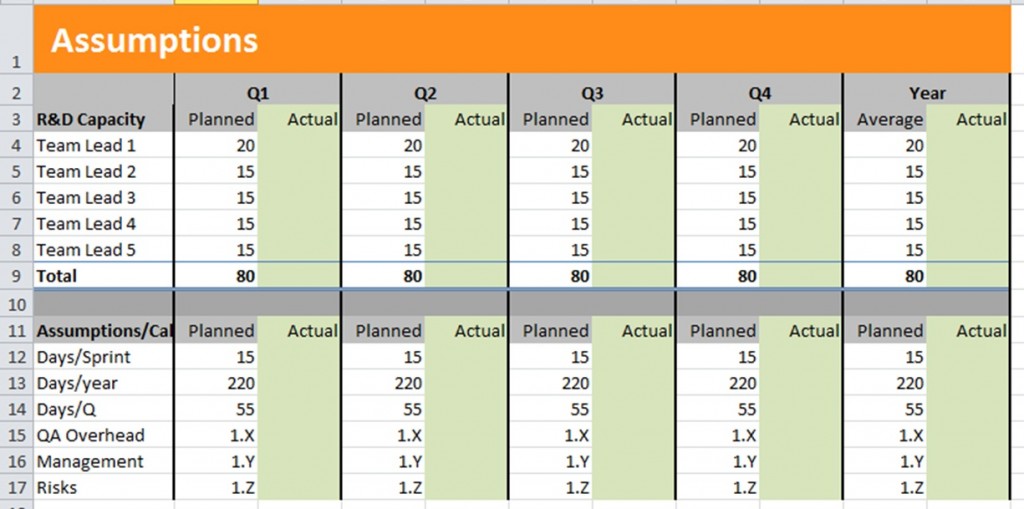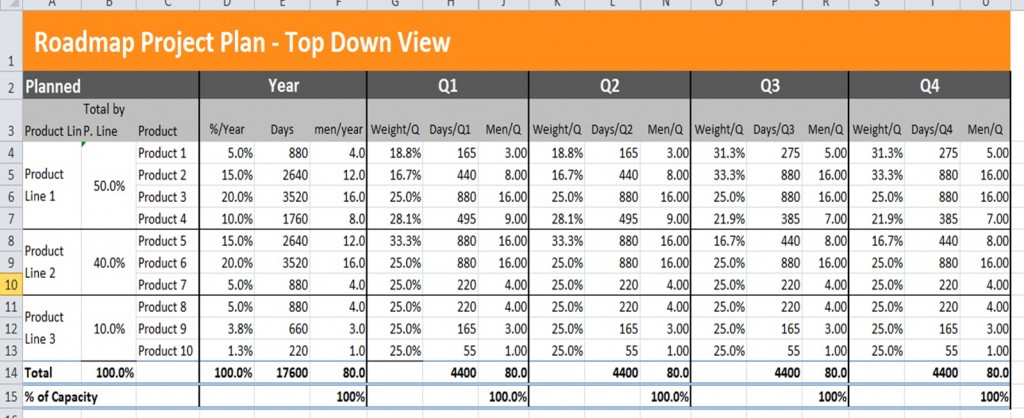By Rivi Aspler
 Acknowledging the fact that roadmap planning actually deals with the planning and then the daily monitoring of budgetary items that are competing over a limited budget (total R&D days per year), quickly paves the road to managing the roadmap like any other budget.
Acknowledging the fact that roadmap planning actually deals with the planning and then the daily monitoring of budgetary items that are competing over a limited budget (total R&D days per year), quickly paves the road to managing the roadmap like any other budget.
This post and the Roadmap Planning – Bottom Up post are dedicated to the day-to-day tasks that one should handle once the product strategy and the big stones have been defined. Or in other words, now that you know where you are going, how can you make sure that you indeed get there.
So much for theory and now for practice
I use an Excel spreadsheet that has 3 worksheets within:
- Assumptions
- Top Down Planning
- Bottom Up Monitoring (Agile based)
Assumptions worksheet
Lists the many assumptions that the roadmap relies on. Example items are total R&D resources per quarter, number of working days per quarter, QA overhead, management overhead, etc.
The Top-Down View
This is a detailed allocation of the planned R&D-days by product and by quarter. This is where you decide on how much money you will invest in the various products and which is more important.
The example below shows an investment of 20% / R&D days in product number 3 and only 5% of R&D effort in product number 8. In the attached example such a decision means that 16 out of 80 R&D people will work on product number 3 and only 4 people will work on product number 8.
Only by managing such a detailed plan of resources allocation you can make sure that:
- Your big stones actually get more R&D power
- The workload over quarters is a steady and a manageable one
- You plan ahead for the painful organizational changes that may be required (building a team of 16 people for one product and leaving only 4 people on another product may require such organizational changes).
This is a detailed monitoring of the actual allocation of R&D resources to the different products; sprint over sprint.
Constantly checking the gap between the plan and actual status will help you stay close and not drift away from your intended roadmap.
Please refer to this article – Roadmap Planning, Bottom Up View – for more details on this topic.
Should you wish to use the excel that is explained in both posts, attached please find it (Roadmap_Plan).
Rivi
Tweet this: Roadmap Planning – Top Down View http://wp.me/pXBON-3uF #prodmgmt #agile


